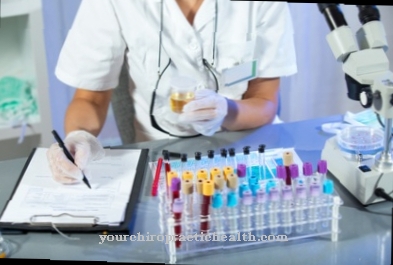The Stimulation current therapy is an alternative method from electrotherapy or electromedicine. The natural conductivity of the human organism is used to stimulate weakened muscles or nerves with electric current.
What is electrical stimulation therapy?

As Stimulation current therapy is a form of the electrical procedure in which impulse currents (direct current or low-frequency alternating currents) are used therapeutically in slowly increasing intensity.
With the help of electrical stimulation therapy, weakened muscles in particular are stimulated by weak electrical stimulation (1 to 1000 Hz) to contract (contract). The procedure is also used for muscle hardening, painful conditions and circulatory disorders. A special form of electrical stimulation therapy is transcutaneous electrical nerve stimulation (TENS), which is used in particular for neuralgia (painful conditions in the area of sensitive nerves) and tumor-related pain.
In addition, a cardiac pacemaker, through which the myocardium (heart muscle) is continuously and specifically stimulated by electrical stimulation pulses and the functionality of the heart is guaranteed, is a very common form of electrical stimulation therapy.
Function, effect & goals
The Stimulation current therapy is generally used for weakened muscles, tissue and / or muscle atrophy (loss of muscles or tissue), circulatory disorders, neuralgia, sciatica (sciatic nerve irritation), arthrosis, tendinitis, incontinence and post-traumatic pain symptoms.
Like any form of electrotherapy, stimulation current therapy uses the basic conductivity of the human organism, which is guaranteed in particular by the blood, urine, lymph and cerebral fluid and the organs and muscles. Electrical stimuli are intended to induce nervous reactions which, in addition to stimulating the muscles, can also contribute to reducing pain (analgesic effect) and improving blood circulation (hyperaemic effect).
In the context of stimulation current therapy, threshold currents in amplitude-modulated pulse sequences are used. The specific current strength, pulse duration and frequency used is selected depending on the individual disease and disease stage. The muscle to be treated is here indirectly stimulated to contract activity via electrodes attached to the skin of the person concerned by electrical stimulation of the motor nerves supplying the muscle, by imitating the natural nerve innervation.
Tetanizing currents (also faradic currents or faradization) in series pulses (short successive pulses) induce muscle contractions that last as long as the current flows. Faradic or tetanizing currents come among others Used for inactivity atrophy (muscle wasting due to non-exertion), chronic habitual constipation, as part of electrogymnastics of the calf muscles to avoid blood vessel occlusions, hypalgesia (reduced sensitivity to pain) and hypesthesia (reduced sensitivity to touch).
With diadynamic impulses (alternating currents with different frequencies with simultaneous use of galvanic currents) an analgesic effect is achieved in pain symptoms, rheumatic diseases or acute traumatic complaints. It is assumed that the low-frequency currents modify the ionic environment on the membranes in such a way that the conduction of stimuli in the sensory nerves is influenced and an analgesic effect is achieved accordingly.
The stimulation currents also stimulate the vasomotor (affecting the movement of blood vessels) vegetative nerve fibers. In the treated area, vasodilation and thus a hyperaemic effect can be induced. In addition, reflexively tense muscles (immobilized by pain) can be detonated (relaxed) by direct stimulation currents.
The effect of electrical stimulation therapy to increase muscle strength and endurance in the context of muscle building training is controversial, but has not yet been clearly confirmed by scientific studies.
You can find your medication here
➔ Medicines for painRisks, side effects & dangers
In the event of improper or inadequate use of the Stimulation current therapy can cause serious damage. Too high a dose can cause damage to the treated skin areas as well as circulatory and sensitivity disorders (abnormal sensations).
Stimulation current therapy is also contraindicated if you are pregnant, as the procedure can cause child or fetal malformations during pregnancy. A contraindication must also be made if the person to be treated has a pacemaker, as the use of stimulation currents can negatively affect the functionality of the pacemaker. If there are inflammatory diseases, thromboses, open skin areas, metals in the body of the person to be treated (metal implants, prostheses) and / or a pronounced arterial circulatory disorder (including arteriosclerosis), the use of electrical stimulation therapy should also be excluded.
In addition, people who wear an insulin pump, have cardiac arrhythmias, febrile illnesses, an increased tendency to bleed or malignant tumors, should be particularly careful when using electrical stimulation. Stimulation current therapy is also not indicated for people who have a pathological fear of electric current.



























